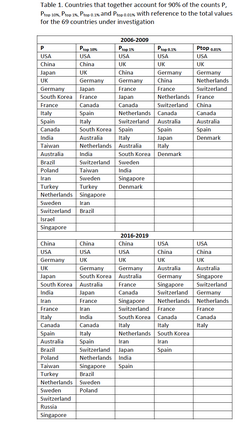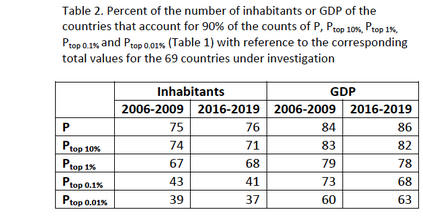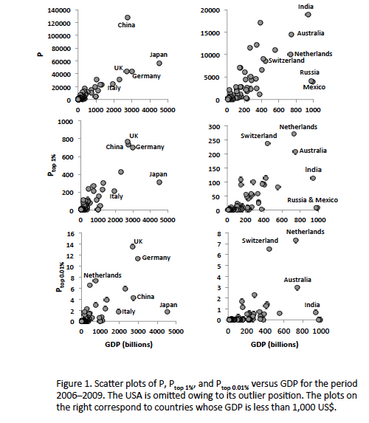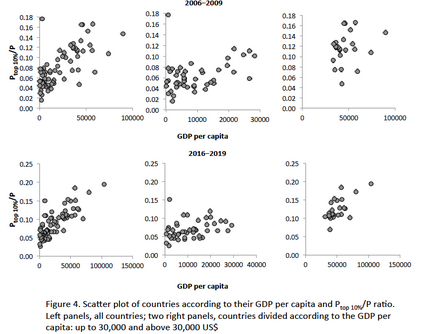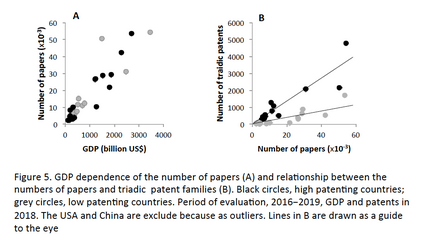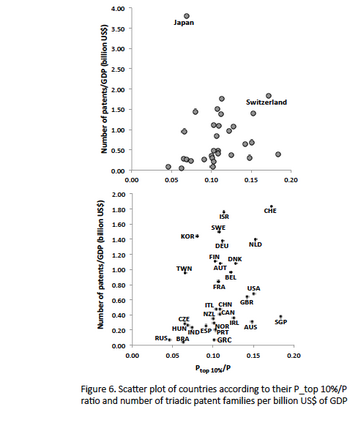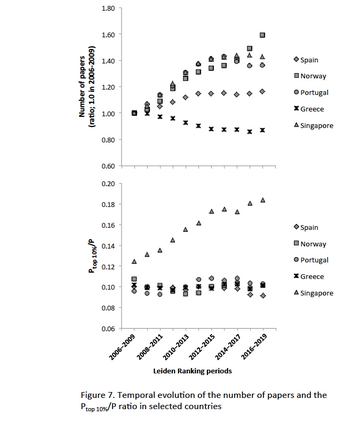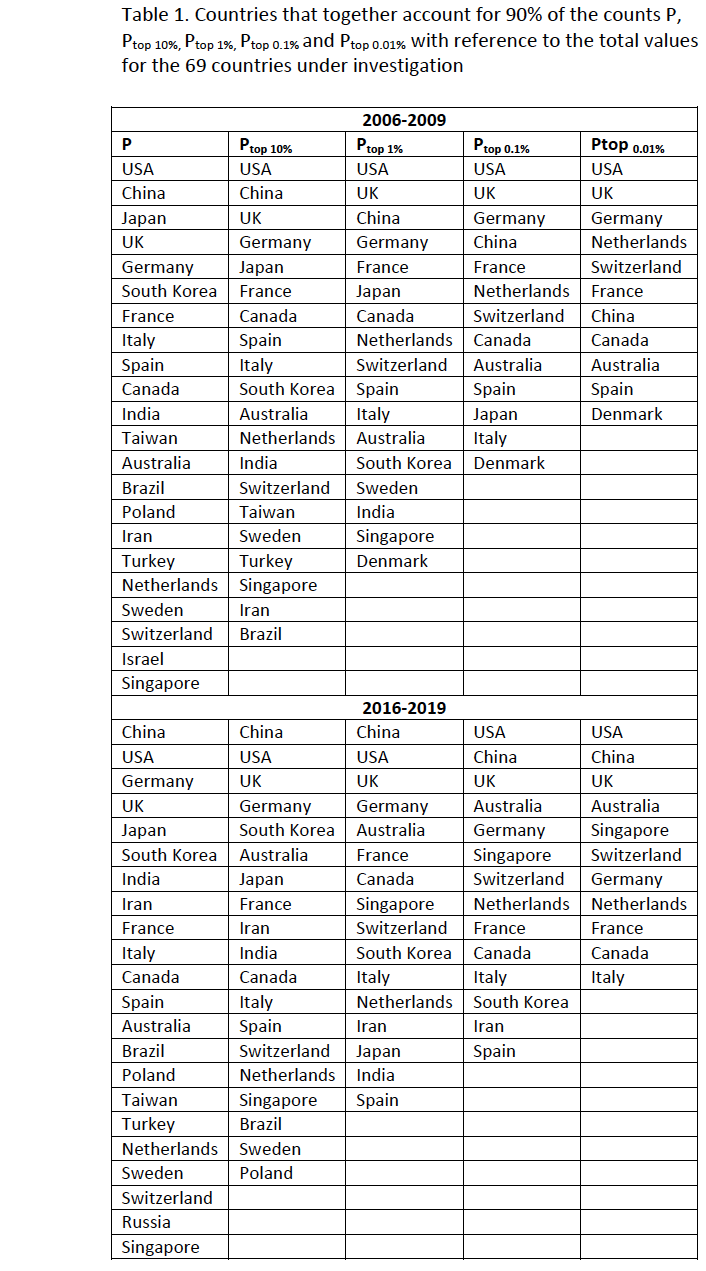We studied the research performance of 69 countries by considering two different types of new knowledge: incremental (normal) and fundamental (radical). In principle, these two types of new knowledge should be assessed at two very different levels of citations, but we demonstrate that a simpler assessment can be performed based on the total number of papers (P) and the ratio of the number of papers in the global top 10% of most cited papers divided to the total number of papers (Ptop 10%/P). P represents the quantity, whereas the Ptop 10%/P ratio represents the efficiency. In ideal countries, P and the Ptop 10%/P ratio are linked to the gross domestic product (GDP) and GDP the per capita, respectively. Only countries with high Ptop 10%/P ratios participate actively in the creation of fundamental new knowledge and have Noble laureates. In real countries, the link between economic and scientific wealth can be modified by the technological activity and the research policy. We discuss how technological activity may decrease the Ptop 10%/P ratio while only slightly affecting the capacity to create fundamental new knowledge; in such countries, many papers may report incremental innovations that do not drive the advancement of knowledge. Japan is the clearest example of this, although there are many less extreme examples. Independently of technological activity, research policy has a strong influence on the Ptop 10%/P ratio, which may be higher or lower than expected from the GDP per capita depending on the success of the research policy.
翻译:我们研究了69个国家的研究业绩,研究了两种不同类型的新知识:递增(正常)和基本(激进)知识。原则上,这两类新知识应该以两个截然不同的引文级别评估,但是我们证明,根据论文总数(P)和全球最上面10%的论文与论文总数(Ptop 10%/P)之间的差别,我们研究了69个国家的研究业绩。P代表数量,而Ptop 10 %/P比率代表效率。在理想国家,P和Ptop 10 %/P比率分别与国内生产总值(GDP)和人均国内生产总值(GDP)挂钩。只有Pp最高10%/P比率高的国家才能积极参与创建基本的新知识并获得诺贝尔奖。在现实国家,经济财富与科学财富之间的联系可以由技术活动和研究政策改变。我们讨论了技术活动如何减少Ptop 10 %/P比率,而只是略微影响创造基本新知识的能力。在这些国家,许多文件可能报告递增创新,但不会影响人均国内生产总值(GDP)的人均国内总产值比率。只有10%/P最高比率的国家才能积极参与创建基本新知识,不过日本的预期的10个例子。

